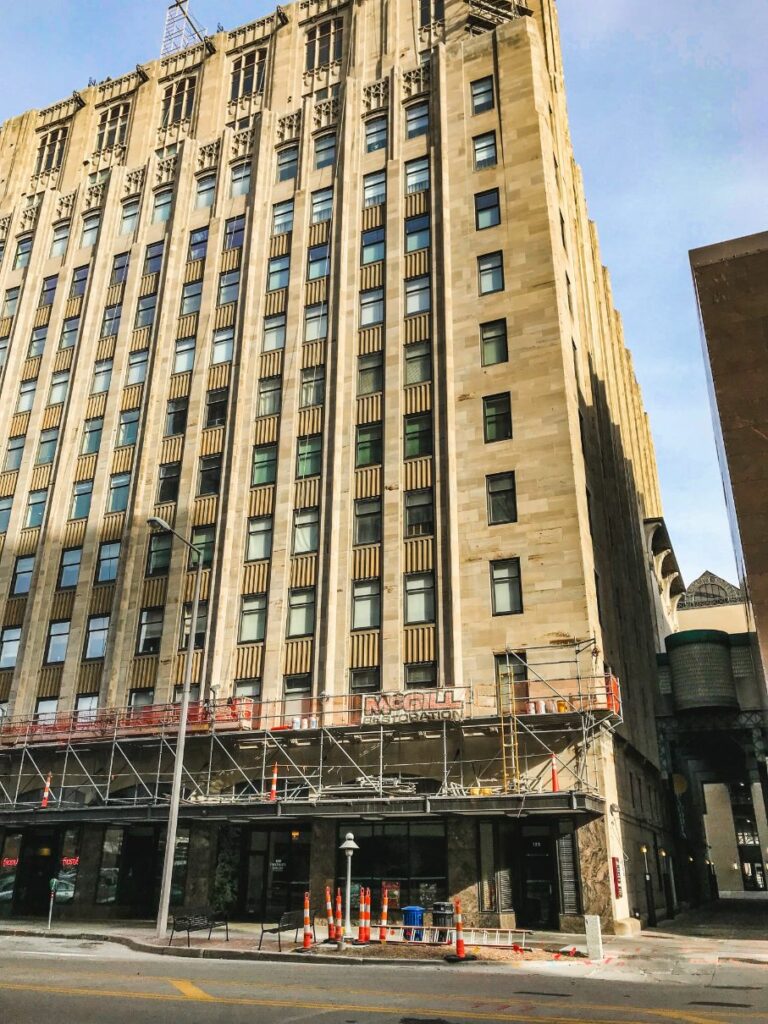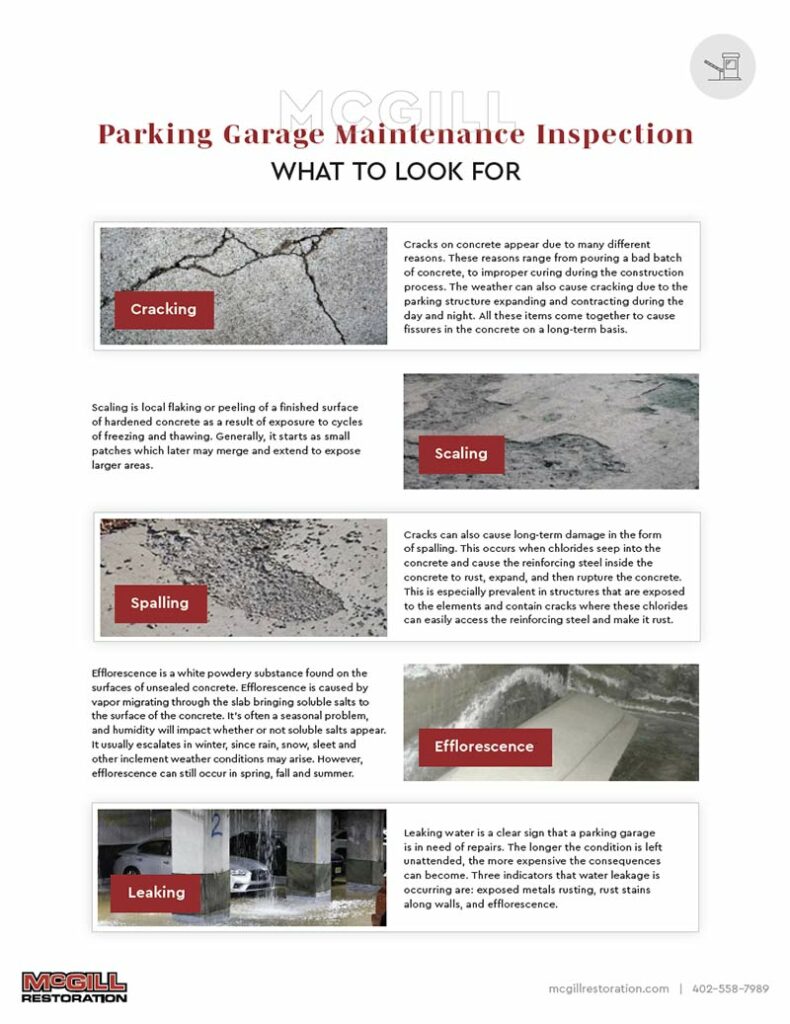Table of Contents
Planning a commercial restoration project is no easy task. The process for selecting a contractor, planning, budgeting cost and determining ROI is complex to navigate. Ultimately, every commercial restoration project begins with the goal of maximizing value when the project is complete.
Monetary value is achieved by elongating the life of a structure. Every investment is unique, and some may select coatings and other options based on short- and long-term goals.
For example, long-term owners will prefer the most durable, low-maintenance approach for ROI across a 10-20 year period.
On the other hand, short-term owners with plans to sell in say five years may choose cost-effective solutions like a penetrating sealer over epoxy coatings. The value is based on custom goals and intentions over different periods of time.
Here’s what to keep in mind when looking for a restoration partner and reviewing their bids.
Start with Experience and Reputation
The best place to start when searching for a contractor is considering their experience and reputation. If they can show proof of success and document their pricing and process accurately, you are off to a good start.
Ask yourself these questions to filter through the initial grouping:
- How long have they been in business?
- Are they working as the general contractor or subcontractor?
- What are their specialties?
- Do they have references from projects on the same scale?
- Do they have experience on projects with a similar scope?
Offering referrals is nice but you should actually talk to previous clients when they are available. Ask pointed questions and gather as much information as possible. If anything, this will help you manage expectations and understand what to expect throughout the restoration project.
The Importance of Consistency and Process
While every project has unique requirements and challenges, the overarching process should be streamlined and documented. McGill Restoration has refined and perfected our Success Cycle to build consistency into every project.
From the initial conversation to inspections, bids, and work commencing, expectations are clear and met by McGill Restoration. The seven steps in the success cycle include:
- Project estimate and proposal
- Contract acceptance
- Pre-construction prep
- On-site work begins
- Daily check-ins
- Weekly performance monitoring
- Final walkthrough, approval and project completion
Each step in this process has a subset of internal steps to move through every project smoothly. Clear processes and expectations make it possible to document, track and smoothly transition through every phase.
Accurate Bids Save Time and Surprises
The bidding process is obviously pivotal in the decision-making strategy for every project. It’s important to understand that not all bids are created equal. Low bids that cut corners can result in premature failures, joint sealants that leak and a number of other problems.
Consider the cost difference between doing things right the first time and having to return for more work in a few years. Constant patching is more time-intensive and costly in the long run. That said, you can still save on costs with custom bids.
McGill Restoration offers three levels of pricing in the bids with detailed line items showing exactly what you’ll get on each model. The pricing strategies are presented simply as:
- Good – Expect the highest quality methods with materials that are cost-effective. They may require replacement and renewals on things like joint sealants and traffic coatings in 3-5 years.
- Better – The same excellent service applies but the materials are upgraded. They are slightly more expensive but also last longer. In many cases, you are looking at 5-10 years with proper maintenance.
- Best – The highest quality materials and coatings will last for 10+ years and longer in the right conditions. Expect durable, thick epoxy and urethane coatings, custom brick presses and the best technology available.
Cost-Saving Strategies
Every project should focus on preserving/restoring structural integrity while delivering on the work described in the bid process. Commercial buildings, historic structures and roadways can all save on costs while maintaining quality however. A few prominent strategies surface for cost savings on building restoration.
Off-Season Work – Discounts for scheduling in the off-season can help save big on costs. Some projects cannot happen in winter due to temperature requirements for special coatings and waterproofing membranes, but many are perfect candidates. In situations where containment and temperature controls are possible, the off-season can be a great time for restoration work.
Sequencing – Scheduling projects in phases, across multiple budget cycles is a great way to manage costs. On many projects, it makes sense to work in phases and break apart the cost structure in a way that benefits stakeholders.
Open Facilities – Complete facility shutdowns can cost in terms of lost revenue and expenses to secure alternate parking and shuttles for tenants and users. Partial closures and working through phases with strategic containment reduces these costs. Consider keeping facilities open to save and reduce headaches for tenants.
Focus on the User Experience
Throughout the process of selecting a contractor, reviewing bids and planning the details, don’t lose sight of the end user. Your tenants, visitors and customers should all have a safe and comfortable experience in parking structures, historic buildings and commercial facilities.
Take the time to consider the experience and what is needed to keep users happy and coming back. Structural integrity, aesthetics, traction on surfaces and small details can make a big difference for the user experience.
Looking to add big value with a little restoration? See how we helped the Cheerio Apartments in Lincoln, Nebraska, without excessive disruption to their tenants.



